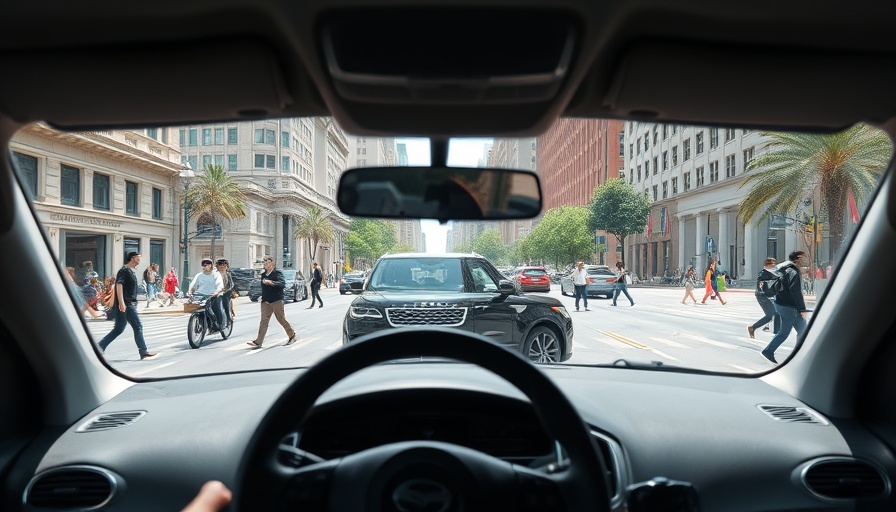
Growing Blind Zones: The Hidden Dangers for Drivers
Recent studies have unveiled a concerning trend in vehicle design: over the last 25 years, the forward blind zones of popular passenger vehicles have expanded significantly. This revelation, brought to light by the Insurance Institute for Highway Safety (IIHS) using a new measurement technique, emphasizes the importance of driver awareness and vehicle safety. As pedestrian and cyclist fatalities have surged, understanding blind zones—a leading factor in these accidents—has never been more crucial.
The Shocking Statistics
Researchers at the Volpe Center implemented a new method that looks at how vehicle design impacts drivers’ visibility. The data reveals a staggering reduction in visibility: for three leading SUVs, the area visible to drivers decreased by an alarming 58%. This data is particularly troubling given the increase in pedestrian and cyclist fatalities, calling for immediate action in vehicle redesigns.
A Closer Look at Vehicle Design Changes
Over the years, as vehicles have become taller and bulkier, the driver's field of vision has suffered. It’s not merely the height of these vehicles that causes massive blind spots; the widening base of the A-pillars and oversized side mirrors also contribute significantly. In the case of the Chevrolet Suburban and Ford F-150, statistics indicate that their blind zones grew, making maneuvering in tight spaces perilously challenging. Consumers should be mindful of these design shifts as they affect daily driving safety.
Decoding the IIHS Measurement Technique
The IIHS has unveiled a sophisticated technique that assesses driver visibility with remarkable precision. This method entails utilizing computational software alongside a portable camera rig to create detailed blind zone maps. Such maps offer an aerial view demonstrating the areas obstructed from the driver’s direct line of sight, which can guide consumers in making informed vehicle purchases. For instance, buyers should not only evaluate aesthetics or price but also prioritize visibility and safety features based on these maps.
What Does This Mean for Vehicle Owners?
For drivers, this report sheds light on the importance of understanding blind zones when considering vehicle repairs or upgrades. As vehicle technology advances, owners should advocate for enhancements that address visibility. If you're involved in a car accident and face potential property damage or insurance claims, knowing the limitations of your vehicle’s field of view can significantly impact your case. Highlighting visibility issues can bolster your claims regarding the accident's circumstances.
Handling the Aftermath of an Accident Efficiently
In the unfortunate event of car damage, understanding how to navigate the repair process is vital. After an accident, insurance adjusters will assess damage appraisals and vehicle valuations—factors that can determine your repair estimates. Always document the visibility issues of your vehicle when filing a claim since it can provide essential context during evaluations. Remember, if you’re uncertain about how to approach these conversations with an insurance adjuster, seek out inspector tips through reliable resources or consult with industry experts who specialize in accident aftermath scenarios.
Taking Action: Steps for Vehicle Owners
As vehicle owners, it's essential to stay proactive. Conduct regular evaluations regarding your vehicles' safety features, emphasizing visibility. Consult the IIHS resources to better understand how your vehicle ranks concerning blind zones. If you notice significant performance issues or degrading visibility, do not hesitate to seek repairs that enhance your safety while driving. As consumers in today's automotive market, advocating for safer designs benefits both you and your passengers while reducing the risk of accidents.
Conclusion: Prioritizing Visibility for Safer Roads
The findings from the IIHS signal a growing need for increasing awareness about vehicle blind zones. As fatalities continue to rise, it becomes evident that action must be taken—both by manufacturers and consumers. Visibility issues should not be taken lightly; understanding them can save lives and mitigate accident-related trauma. As a vehicle owner, prioritize research and take steps to ensure safety for yourself and others on the road.
 Add Row
Add Row  Add
Add 




Write A Comment